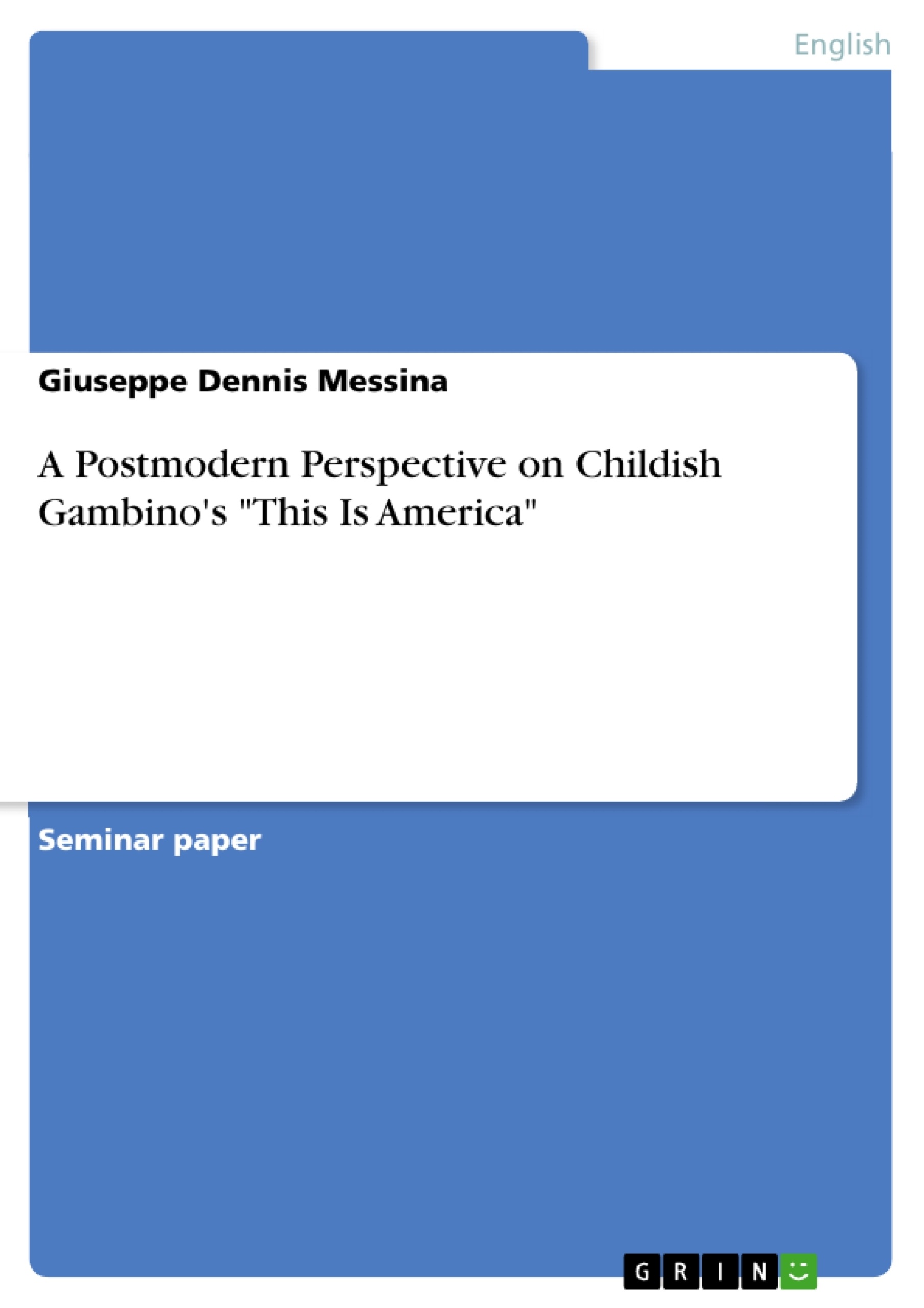The key aim of this thesis is to analyse Childish Gambino's music video for "This Is America" with a postmodern lens. The music video uses typical postmodern traits, such as pastiche, fragmentation, and the transgression of limits. By doing this, it is both an ironic representation of America and a sharp criticism of the status quo and America's values.
Table of Contents
- INTRODUCTION
- A POSTMODERN PERSPECTIVE ON "THIS IS AMERICA"
- WHAT IS POSTMODERNISM?
- COMPATIBILITY OF HIP-HOP AND POSTMODERNISM
- POSTMODERN FEATURES IN "THIS IS AMERICA"
- PASTICHE, IRONY AND INTERTEXTUALITY
- The imagery...
- The dancing and the music...
- THIS IS AMERICA AS POSTMODERN "CHAOTIC CRITIQUE"
- CONCLUSION
Objectives and Key Themes
This term paper aims to analyze Childish Gambino's music video "This Is America" through a postmodern lens. The paper explores the compatibility of hip-hop and postmodernism and examines how the video's use of pastiche, fragmentation, and transgression of limits exemplifies postmodern artistic practices.
- Postmodernism as a critical attitude towards institutions, social inequalities, and hierarchies.
- The transgression of cultural boundaries and genre limits in postmodern art.
- The intertextual and parodic use of text, media, and past sources in postmodernism.
- The bridging between elite and popular art, challenging the boundaries between high and low art.
- The "incredulity toward master or metanarratives" as a key feature of postmodernism.
Chapter Summaries
- Introduction: The paper introduces Childish Gambino's "This Is America" and highlights the video's ambiguity and potential for diverse interpretations. It argues that a postmodern framework offers a comprehensive understanding of the video's complex symbolic language and genre-bending elements.
- A postmodern perspective on "This Is America": This section explores the concept of postmodernism, highlighting its complexities and contradictions. It defines postmodernism as a framework, not a historical period, and emphasizes its focus on pluralism, multiple representations, and visual culture.
- What is postmodernism?: This chapter delves deeper into the definition of postmodernism, tracing its origins, key features, and impact on various cultural domains. It discusses postmodernism's critical stance towards grand narratives, its emphasis on fragmentation and discontinuity, and its relationship to late capitalism and mass culture.
- Compatibility of hip-hop and postmodernism: This section examines the potential of hip-hop to embody postmodern principles. It argues that the genre's "ludic postmodernism," with its playful use of language and resistance to dominant ideologies, resonates with postmodern artistic practices.
Keywords
This term paper focuses on the key terms and concepts of postmodernism, including pastiche, fragmentation, intertextuality, metanarratives, and the compatibility of hip-hop and postmodernism. It examines how these concepts are manifested in Childish Gambino's music video "This Is America" and explores the potential of a postmodern perspective to offer a nuanced understanding of the work's complex symbolism and artistic innovations.
- Quote paper
- Giuseppe Dennis Messina (Author), 2020, A Postmodern Perspective on Childish Gambino's "This Is America", Munich, GRIN Verlag, https://www.grin.com/document/1192099



